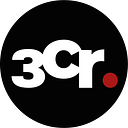Tech Startup Brand Design: Creating a brand identity that aligns with your brand strategy
By now, hopefully you have a good understanding of what makes up brand foundation, brand positioning and brand messaging. These are all the aspects of your brand strategy, the distinguish step in the D.A.C system. Now you’ve got to distil and present all of that in a visually engaging way with an attractive brand design.
Reflecting your brand strategy in your brand design
The most important thing that you need to know about brand designs is that they have to be completely in line with your brand strategy, primarily your brand positioning. Your logo, your font, every aspect of your design will have a subconscious meaning and association in the heads of your audience. If there’s a disconnect between the positioning of your brand and the design, it’s an immediate turn-off for customers.
Your messaging and your core values will also have a major role in determining your brand design, especially your colour choice (more on that later). Your design will invoke an emotional reaction, so you better make sure it’s the right one.
Creating a logo
Your logo is the symbol that identifies you to the world. If you have any hopes of your business being recognisable, you need a killer logo, no two ways about it. There aren’t a lot of rules as to what can and can’t be in a logo, but that doesn’t mean that making a logo is necessarily easy.
There are some fascinating stories behind the logos of some of the world’s most recognisable brands. Back in 2008, British Petroleum spent a whopping $211 million dollars for their logo. On the opposite end of the spectrum Nike, who have one of the most popular logos in the world, got theirs for $35 in 1971.
Amazon hides a clever little trick in their logo. They offer the widest variety of products anywhere on the internet, so the arrow underneath their logo literally goes from A-Z.
The first step is deciding what kind of logo you want. Text and visuals? Just text? Just visuals? If you’re going to use text, what kind of font will you use? If you’re going to be using visuals, what kind will suit your brand best? Take a look at all of these brand’s logo’s to see just how many options are out there:
Feeling a bit overwhelmed with choice?
For inspiration and guidance, look at your market. Look out for patterns and rules that the logos follow. See what’s worked and what hasn’t, what consumers connect with and what they don’t. A deep look at your market should give you the information you’ll need. You can use this information and apply it to your unique values, culture and vision. The key to logo design is finding a balance between industry norms and differentiation.
Your positioning, messaging and the market you operate in are the three factors to keep in mind when you’re choosing both the font and the visuals of your logo. Let’s look at some examples.
Here are some of the biggest brands in the mobile phone space’s logos. Notice the similarities?
How about if you compare them to some of the biggest names in fast food?
In each case, and in each distinct market, there are clear motifs in the font choice, colour schemes, and overall design of the logos.
Remember, it’s a balancing act. Too similar, and you won’t stand out. Too different, and you’ll alienate yourself.
Font and typography
Within your brand design, you need to set out a font that will be used on your website, in your content, and across all your other promotional materials. A consistent font throughout your marketing activities will create brand cohesion and recognisability.
Just like your logo, your font should reflect your company. Let me show you what I mean.
This is the kind of font you might see a bookshop have. Think Waterstones. It’s traditional, and it conveys a feeling of establishment and formality. This font would work great if those are the feelings you want associated with your brand. However, for tech startups, that might not be what you’re aiming for.
A font like this might be more appropriate. It’s modern and it reflects a company that’s looking to the future.
Now neither one of these fonts is necessarily better than the other, but they would each only work with very different kinds of business and in very different markets.
Just for fun, here’s a few brand logos all with the comic sans font. Notice how drastically it changes your perception of the brand?
If you’re running a tech startup but aren’t clear on how to communicate your positioning and messaging in your brand design, don’t panic, we can help you! Our expertise are in branding and neuromarketing, which means we know what it takes to develop brand identities that accurately communicate all the elements of your brand strategy. Get in touch if you’d like to hear more.
About us
3 Colours Rule is a branding and marketing agency specialising in growing tech companies and start-ups. Beyond our brand strategy, design and marketing services; we also have a podcast: Tech Brains Talk where our founder has conversations with experts and entrepreneurs in tech. We also have a branding and marketing academy to support marketers expand their skills and entrepreneurs too. We also run our non-profit organisation, TLA Black Women In Tech, one of the fastest-growing communities for black female professionals and entrepreneurs in tech.
